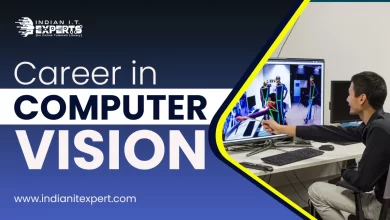What is SSD?
Solid-state drive (SSD) is a solid-state storage device that uses integrated circuit assembly as memory to store data. SSD is also known as solid-state disk although SSDs we know do not have physical discs. Form-factors and protocols like a SATA and SAS of traditional hard disk drive (HDD) can be used by SSD, greatly simplifying usage of SSDs in computers. New form factors like a the M.2 form factor, and new I/O protocols like a NVM Express have been developed to address particular needs of the Flash memory technology used in SSDs.
Table of Contents
What is SSD?
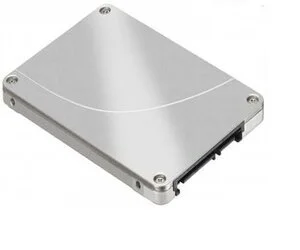
If we talk about an SSD, and solid-state drive, is a kind of storage device used in computers. Then, this non-volatile storage media stores constantly data on solid-state flash memory. SSDs supersede traditional hard disk drives (HDDs) in computers and perform the same basic Actions as hard drives. But SSDs are much faster in comparison. With an SSD, the device’s operating system will boot more quickly, programs will load faster, and files can save quickly.
How do SSDs work?
An SSD reads and writes data to built-in interconnected flash memory chips made of silicon. Manufacturers build SSDs by stacking chips in a grid to achieve different densities.
SSDs read and write data to a built-in set of interconnected flash memory chips. These chips use floating gate transistors (FGTs) to hold an electrical charge, which enables the SSD to store data even when not connected to a power source. Each FGT contains one bit of data, designated as either a 1 for a charged cell or a 0 if the cell has no electrical charge.
What are the major features of SSDs?
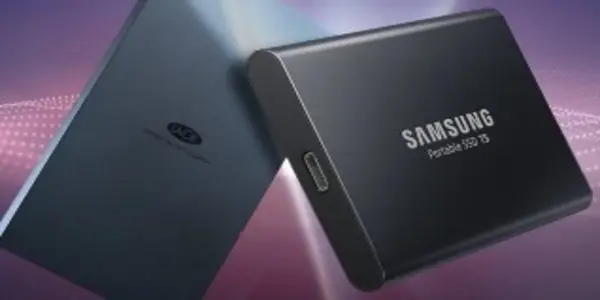
Several features characterize the design of an SSD. Because it has no moving parts, an SSD is not subject to the same mechanical failures that can occur in an HDD. SSDs are also quieter and consume less power. And because SSDs weigh less than hard drives, they are suitable for laptops and mobile computing devices.
In addition, the SSD controller software includes predictive analytics that can alert the user in advance of a possible drive failure. Because flash memory is flexible, all flash array vendors can manipulate the usable storage capacity using data reduction techniques.
What are the advantages of SSDs?
The benefits of SSDs over HDDs include:
Faster read/write speeds: SSDs can access large files faster.
Quicker boot times and better performance: Since the drive does not need to spin up as an HDD, it is more responsive and provides better load performance.
Durability: if we see durability the SSDs are more shock-resistant and can handle heat better than HDDs because they don’t have moving parts.
Power consumption: SSD requires less power to operate than HDD due to lack of moving parts.
Quieter: SSDs produce less audible noise because there are no moving or moving parts.
Size: SSDs come in a variety of form factors while HDDs are limited in size.
What are the disadvantages of SSDs?
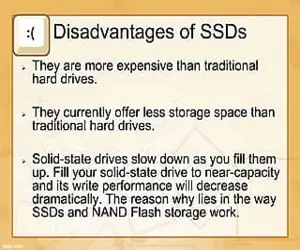
That come with SSDs include:
Cost: SSDs are more costly than traditional HDDs
Life expectancy: Some SSDs, in case, those that use NAND memory-flash chips, can only be written to a specified number of times which is usually less than HDDs.
Performance: Limitations on the number of write cycles cause SSDs to reduce in performance over time.
Storage options: Due to cost, SSDs are usually sold in smaller sizes.
Data recovery: This time consuming process can be costly, as we see that data on damaged chips may not be recoverable.
What are the types of SSD non-volatile memory?
NAND and NOR circuitry different from the type of logic gate they use. If you see NAND devices use eight-pin serial access to data. Meantime, NOR flash memory is commonly used in mobile phones, supporting 1-byte random access. Compared to NAND, NOR flash provides faster read times, but is generally a more expensive memory technology. NOR writes data in large chunks, which means it takes longer to erase and write new data.
History and evolution of SSDs
- The first solid-state drives were normally designed for consumer devices. This replaced in 1991 when SanDisk released the first commercial flash-based SSD. That’s mean commercially designed SSDs were built with enterprise multi-level cell flash technology, that increased write cycles.
- The introduction of the Apple iPad in 2005 marked firstly notable Flash-based device to enter the consumer market widely.
- Toshiba Declared 3D V-NAND in 2007. 3D Flash devices enlarge capacity and performance.
- Evolution of a SSDs EMC now Dell EMC is credited with being the first vendor to incorporate SSDs into enterprise storage hardware, adding the technology to its Symmetric disk formalize in 2008.
- Toshiba presented the triple-level sale in 2009. TLC flash is a kind of NAND flash memory which stores three bits of data per cell.
- If we see that IBM is Treated the first major storage vendor to release a dedicated all-flash array platform called Flash System, focused on technology from its acquisition of Texas Memory Systems in 2012.
- When you see that in 2012, EMC acquired XtremIO and now ships an all-flash system focused on XtremIO technology.
SSD vs. HDD
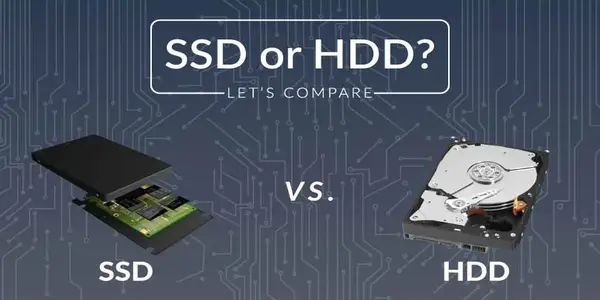
- SSDs are treated to be much faster than the highest performing HDDs.
- Latency is also reduced to a great extent, and users generally experience very fast boot times.
- Many factors affect the lifespan of SSDs and HDDs, including heat, humidity, and then the effects of oxidizing metals inside the drive. Data on the one and another types of media will degrade over time, with HDDs generally supporting a higher number of drive writes per day.
- Industry experts confirmed storing unused or inactive SSDs at lower temperatures to extend their life.
- The moving parts of HDDs are more likely to fail.
- This type of sensor detects whether the machine is about to fall and takes steps to shut down the HDD and related critical hardware.
Conclusion
Lastly, SSDs are an incredible device that uses non-volatile flash memory making devices that perform at very high speeds. There are many benefits of using an SSD such as making the system faster, making your computer more reliable, and better system cooling. All these benefits are important as it will save you time and money in future. Overall, everyone can benefit from having an SSD. Whether you’re a student, faculty member, or employee, SSD is a tool you might find useful.
FAQs
1. What is SSDs?
A traditional hard drive consists of a spinning disk with a read/write head mounted on a mechanical arm called an actuator. An HDD reads and writes data magnetically. However, magnetic properties can cause mechanical breakdown.
By comparison, SSDs have no moving parts to break or spin up or down. The two major components in an SSD are the flash controller and the NAND flash memory chips. This configuration is optimized to give high read/write performance for sequential and random data requests.
2. How long is the life of an SSD
Also, not much is known about how long the SSD will last as they are new devices. Nevertheless, some estimates say that a typical SSD will last up to 10 years under normal workload. This is an increase of five to six years that was once used as an estimate.
3. How can you explain when an SSD dies?
There are several major warning signs that your SSD is about to die:
1. Bad block errors: As we see like that type of warning then you cannot write to a specific block on SSD, random freezes and errors, random crashes.
2. Cannot write to disk: As it says, there will be disk you can no longer write to the SSD, which in turn
causes crashes, errors, and more.
· How can we know that what’s next for Pillar in this area?3. File system repair: You have to need to repair your operating file system regularly.
4. Boot crashes: if we talk in this then your operating system cannot boot properly, and your system fails to load.
5. Read-only: SSD suddenly goes into read-only mode, preventing you from writing new data to the drive.
4. What are the Advantages and disadvantages of SSDs
Increased durability due to no having parts to wear out or fail
Considerably faster data transfer rates (some drives claim 92% faster)
Additionally reliable long-term storage and no need to “exercise” drives
Decreased power consumption
Decreased heat
5. Is the best implementation route for SSDs?
There are two tools available in the market today: connecting the SSD as more cache or using the SSD as the actual storage capacity. Both tools make sense, depending on the storage architecture they are being deployed in. that the real key is to ensure that only the most important applications and data are accessing the SSD, whereas all other data is being held on a traditional “spinning disk”. There are some storage architectures available today that provide this level of functionality, or storage QoS.
6. When will you block and prioritize applications in the capacity model?
There are few tools today that enable easily, much less detect and automate, the process of ensuring that the most performance-sensitive or mission-critical data is kept in the new Tier 0.
This problem can be solved with application-aware technology. It allows an administrator to easily define the application type and value associated with the business through a simple drop-down menu. The system then automatically tunes itself to deliver differentiated storage service tiers based on each application’s business priority. Those storage service levels include determining which drive type (SSD, FC or SATA) to write the data to.
7. How can we know that what’s next for Pillar in this area?
With our initial implementation we support SSDs with SATA. Users will see immense performance enhancement and cost savings with this offering. Going forward, Pillar will support FC, SATA and SSD with a new QoS level and application-aware profile in a single system to further exploit the performance of SSDs. Ongoing, Pilar will evaluate new SSD technologies such as faster performance and bigger capacity, as they hit the market. The SSD will also upgrade the pillar slammer and BRIC components as they come to market to increase IOPS and bandwidth in BRICS.



